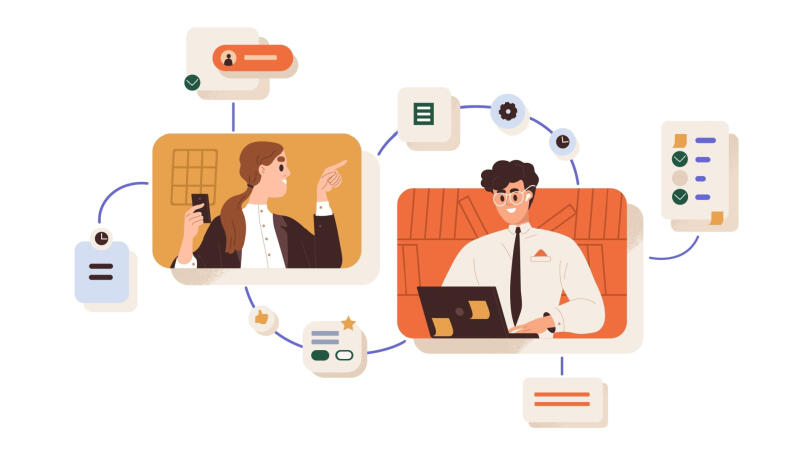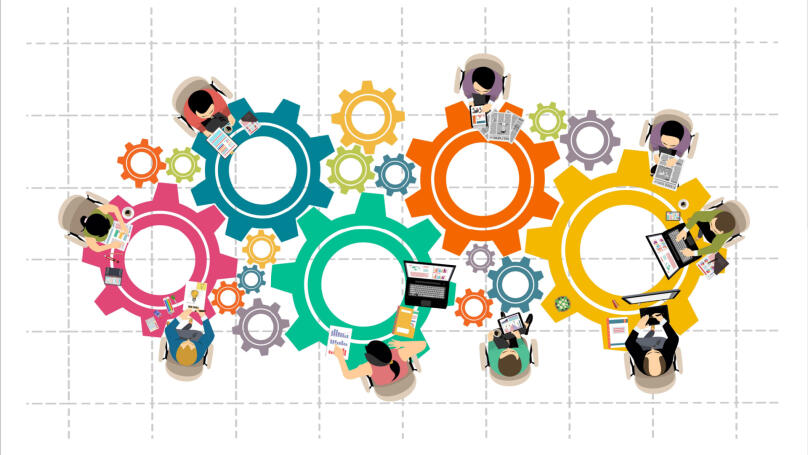PRINCE2

What is PRINCE2?
PRINCE2 is a structured project management method that continuously monitors the entire project from inception to completion. This approach emphasizes meticulous planning for all stages of a specific project even before its commencement, clear organization of each process, and swift rectification of problems and errors.
The name "PRINCE2" stands for "Projects in a Controlled Environment" or, in other words, having complete control over every phase of the project implementation process. The meaning of "2" indicates that it is the second iteration or version of the methodology. The first version was initially developed in the UK during the 1980s, primarily for managing IT projects and innovations. However, only a decade later, in 1996, project management experts revised and improved the methodology, extending its application to various fields beyond just information technology.
PRINCE2 vs. Agile and Scrum
PRINCE2 is often compared to Agile and Scrum methods. While all three approaches focus on enhancing productivity and work process efficiency, they vary in key aspects.
Agile is an entire philosophy or way of thinking. Its core principles prioritize people over tools, quality product delivery, increased client interaction, and favoring experimentation over strict plans. In contrast, PRINCE2 aligns with only two principles: emphasizing delivering high-quality products and fostering closer client interaction.
Scrum focuses on a specific method for organizing work processes, serving as a flexible framework for project development and management, along with non-traditional task allocation within teams. Agile, on the other hand, encompasses a broader concept, including flexible methods like Scrum, Kanban, and more.
PRINCE2 cannot be exclusively categorized as an Agile approach; instead, it combines classical and innovative project management approaches. PRINCE2 can serve as the foundation for project development, with Agile methodologies integrated to enhance adaptability, speed up processes, and improve communication.
PRINCE2 Benefits

The PRINCE2 methodology is the most widely used project management approach globally today. Its foremost advantage is its remarkable versatility. This versatility hinges on the ability of PRINCE2 to establish an effective management system for nearly any project, regardless of its scope, complexity, external factors, or implementation deadlines. Thanks to this flexibility, PRINCE2 offers another significant benefit: the ability to swiftly respond to external circumstances, such as changes in product requirements, ultimately minimizing risks.
Besides its flexibility and adaptability, several more advantages are worth mentioning:
-
Clarity and Consistency: PRINCE2 provides a structured framework that reduces chaos from the working process.
-
Priority on Goal Attainment: The PRINCE2 method prioritizes achieving defined goals, fostering a more precise delineation of key tasks and the means to accomplish them.
-
Precise Definition of Roles and Responsibilities: This method assigns specific roles and tasks to each group member. This enhances work efficiency and establishes communication and decision-making mechanisms.
-
Transparency in All Processes: Through a well-defined division of responsibility and control of every work stage, transparency becomes a hallmark of the process.
-
Effective Communication: PRINCE2's structured and coherent structure enhances communication between project developers and stakeholders.
Thus, using the PRINCE2 method empowers companies to get more effective results in project management.
Disadvantages of PRINCE2
Despite its many advantages, the PRINCE2 methodology also has significant disadvantages, including:
-
Excessive Formalism: PRINCE2 is often perceived as a rigid and highly formalized management approach, which can introduce additional challenges, particularly for small-scale projects.
-
Extensive Documentation: PRINCE2 requires the maintenance of a substantial volume of documentation, including detailed plans, reports, and protocols. The creation and completion of these documents demands additional time and resources.
-
Requirement for Trained, Highly Skilled Personnel: The PRINCE2 method can prove quite challenging for untrained specialists, as it assumes a high level of knowledge and proficiency in project management.
-
Neglecting the Human Factor: PRINCE2 places a heavy emphasis on controlling all development processes but may sometimes underemphasize the team, their motivation, and relationships within the team.
However, it's crucial to note that through proper implementation and a considered approach to project management, the disadvantages of this method can be minimized and effectively eliminated. In any case, before adopting PRINCE2, a thorough assessment should be conducted to determine whether its implementation is genuinely warranted.
7 principles of PRINCE2

The PRINCE2 method is based on seven core principles:
-
Continuous assessment of feasibility and economic justification: Projects must be justifiable, with clear objectives, benefits, and cost estimates. If a project loses relevance, it should be discontinued. Benefits must exceed costs and risks, necessitating constant evaluation of feasibility and relevance.
-
Utilizing experience and continuous improvement: Learning from previous projects and applying lessons to future work is crucial. Team members must continually enhance their project management skills and record any experience they gained for ongoing improvements.
-
Clear roles and responsibilities: Each project participant is assigned specific roles and responsibilities, ensuring effective communication and prompt decision-making.
-
Step-by-step workflow planning: Projects are divided into manageable stages, each with goals, resources, and deadlines. This phased approach simplifies control, planning, and assessment.
-
Compliance with fundamental requirements: Projects must adhere to essential criteria, such as deadlines, costs, and risks, clearly defined before starting. Senior managers delegate everyday tasks to project managers, intervening only in case of a significant issue.
-
Product quality as a priority: The ultimate goal of each project is to deliver a high-quality product. PRINCE2 ensures regular quality checks, error reduction, issue resolution, and risk minimization.
-
Adaptive approach: The PRINCE2 methodology must adapt to specific project conditions, considering deadlines, product requirements, and team size.
PRINCE2 project stages
PRINCE2 defines the following stages of project management:
-
Project start or launch: This phase involves launching a new project, describing its objectives, benefits, and costs, and selecting a project leader and team members with relevant skills.
-
Project initiation: Information about the project is clarified, and the work plan, budget, resources, and potential risks are established. The Project Initiation Document (PID) is created, serving as the basis for project management.
-
Stage control: The project manager breaks the process into manageable steps, each with specific goals, resources, and deadlines. Every stage is followed by an update of the plan for the next, along with an analysis of the experience gained.
-
Production and product release management: The project manager evaluates work performance, deciding whether the product meets quality standards and whether to proceed or release the product.
-
Project completion: This phase begins when all project work is finished. It can start earlier if the project loses relevance. A project report is prepared, assessing team activities, results, and resources and offering recommendations for future work.
Each stage involves specific processes, necessary documents, and tools to help the team achieve their goals.
PRINCE2 documents

One of the notable attributes of the PRINCE2 method is its commitment to continuous documentation of all operational procedures. However, this results in the accumulation of a substantial amount of documentation. This meticulous documentation is imperative to maintaining an organized structure in project management, as well as facilitating ongoing scrutiny and supervision by management. Within the suite of documents utilized by specialists who use the PRINCE2 method, the following are particularly significant:
-
Project Plan: Serving as the foundational and most comprehensive document, it lays out the objectives and tasks for the current project, as well as any required resources and key control points.
-
Project Initiation Document: This detailed document expounds upon the work undertaken during the project, encompassing anticipated benefits, costs, risks, and project timelines. It offers a more precise and elaborate insight into the specific project, including its prospects, relevance, and intricate implementation considerations.
-
Economic Justification: This document articulates the significance of creating a specific product or implementing a plan, highlighting its advantages compared to alternatives and the expected benefits.
-
Communication Management Strategy: This lays out the plan for effective interaction among all team members and with the project's customer and manager. This encompasses general communication guidelines, protocols for meetings, and more.
-
Risk Register: A comprehensive catalog of potential risks in the project management process, accompanied by their consequences and strategies for mitigation.
-
Quality Register: Information about quality standards and strategies for maintaining a high level of quality. This is indispensable for regular assessments of a product's quality.
-
Issues Register: A list cataloging any problems, questions, conflicts, and contentious situations, along with strategies for their resolution.
-
Change Register: Detailing information about proposed changes within the project, including their necessity and expected impacts.
-
"Experience" Document: A collection of insights from previous projects that can prove invaluable in a current project.
-
Product Documents: These documents furnish details about the products created during the project, including their specifications, technical descriptions, versions, and more.
-
Project Completion Report: This document serves as the comprehensive assessment of the project's progress and the quality of its execution. For the most accurate analysis, compare the project completion report with the project initiation document.
Given PRINCE2's global acceptance and use in over 100 countries, it has garnered international recognition. As a result, a special document known as the "PRINCE2 Certification" was created. This certification is the globally acknowledged gold standard for project management. Acquiring this certificate signifies that professionals have validated their expertise and skills in project management. To receive this certificate, you must complete a short training course, pass a specialized exam, and validate your qualifications.
PRINCE2 Books
To excel in PRINCE2, both in theory and practice, we highly recommend the following popular books:
1. "PRINCE2 for Beginners" by Brian Mathis
Tailored for beginners, this guide incorporates the latest versions of the certification program. Reading Brian Mathis's book will help on your journey to becoming a certified PRINCE2 specialist.
2. "PRINCE2 for Dummies" by Nick Graham
This book delves into agile project management techniques, offering comprehensive insights into PRINCE2 strategies at every stage of your work. The author emphasizes the advantages of this approach and gives fundamental rules for its effective implementation.
3. "PRINCE2 Foundation" by Frank Turley
A crucial resource for those wishing to get PRINCE2 certification. Frank Turley's book is laser-focused on helping you prepare for the exam by providing essential, concise information about the PRINCE2 method.
4. "PRINCE2: A Practical Guide" by Colin Bentley
Colin Bentley takes an in-depth approach to illustrate how implementing PRINCE2 can elevate your project's capabilities and enhance your team's productivity. This book comprehensively addresses key aspects of project management, including strategies for mitigating various risks, making it a valuable companion for applying PRINCE2 skills.
5. "Managing Successful Projects with PRINCE2" by Nigel Bennett
Tailored for project management professionals, especially those working with PRINCE2. This book not only provides insight into the method's latest updates but also delves into the nuances of implementing and improving PRINCE2 across many diverse projects. It accentuates the method's adaptability and capacity to respond to changing conditions.
These books provide an essential foundation for getting a theoretical understanding of PRINCE2 and reinforce it with practical skills.
Learning by topic
Personal Brand Basics. First Steps Towards Popularity Growth
Ways to form and promote a personal brand, networking tools, analysing expert cases
Summary
The PRINCE2 methodology has remained popular for over two decades thanks to its ability to combine traditional and flexible project management approaches. While it may appear rigid and formal, PRINCE2 offers adaptability, responsiveness, and versatility. This makes it effective for risk management, communication enhancement among team members, structured process management, and goal achievement. It is critical to understand the nature of your project and its requirements before adopting PRINCE2. When used correctly, it can significantly improve project management and outcomes.























